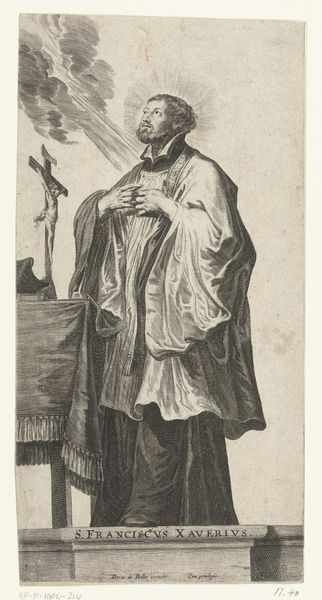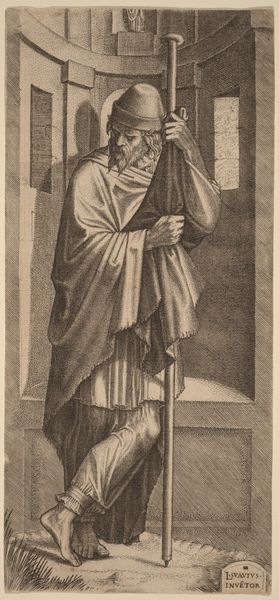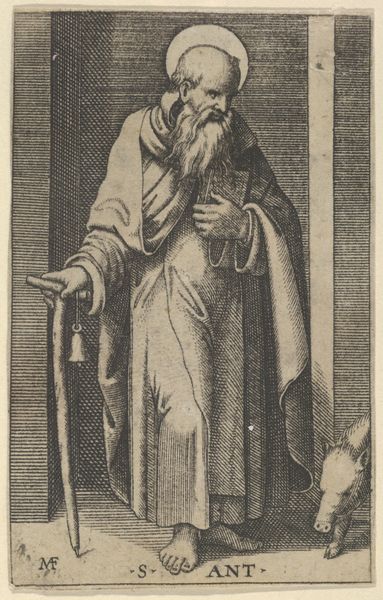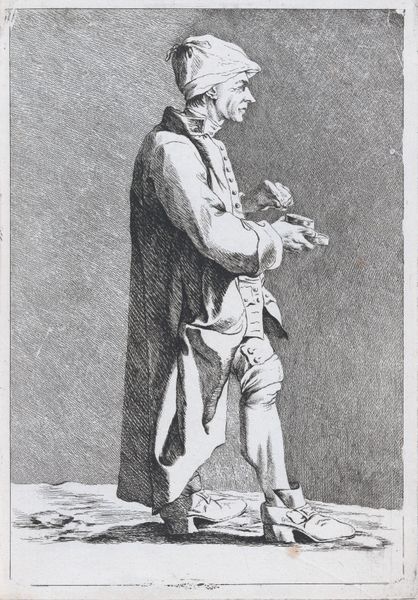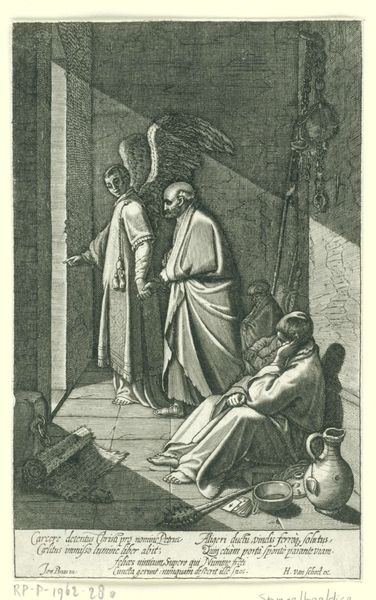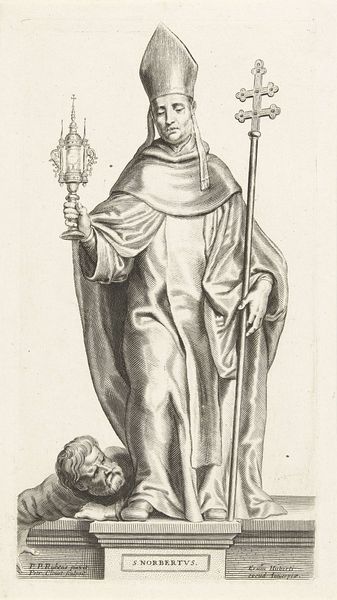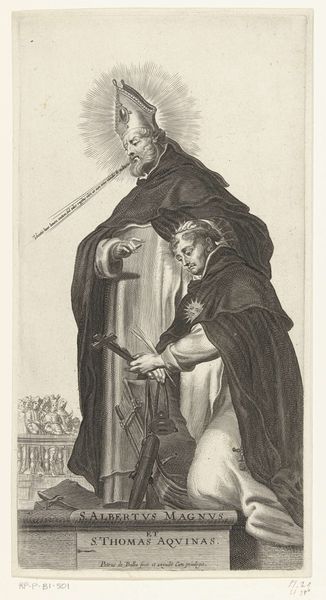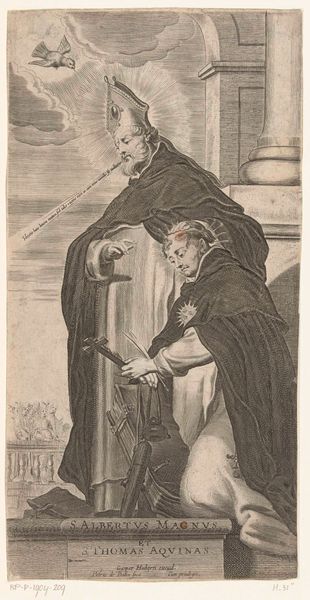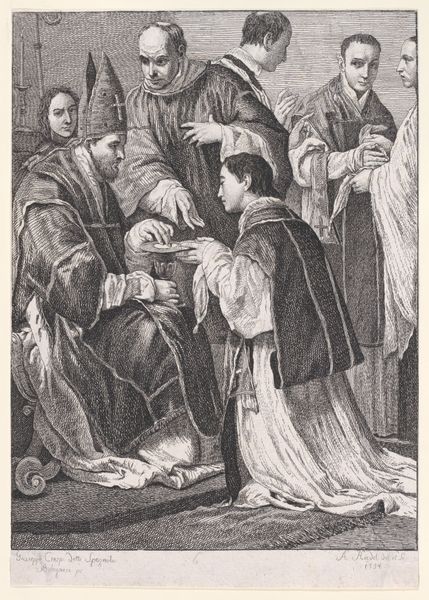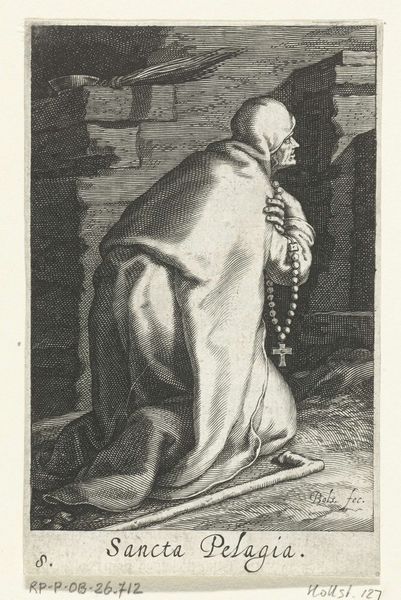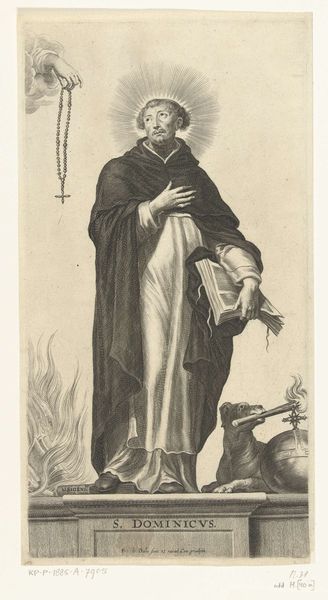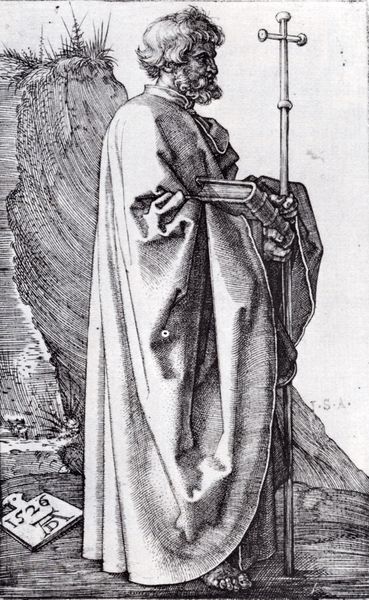
drawing, print, etching
#
portrait
#
drawing
#
baroque
# print
#
etching
#
dog
#
men
#
portrait drawing
#
genre-painting
Dimensions: Sheet (Trimmed): 13 1/16 × 7 1/2 in. (33.1 × 19.1 cm)
Copyright: Public Domain
Editor: Here we have "The Blind," an etching by Louis Surugue after Charles-Joseph Natoire, created sometime between 1738 and 1748. It depicts an elderly blind man, holding a cane and led by a small dog. There’s a somber feel to it. What catches your eye when you look at this print? Curator: It's interesting how blindness, the literal absence of sight, becomes a potent symbol here. The dog, his guide, embodies loyalty and unconditional love. But look closer. Doesn’t the man’s garb, that outdated hat, suggest something more than just simple misfortune? Perhaps societal disregard, a casting aside of the old? Editor: I see what you mean about the clothes hinting at neglect. But I hadn’t thought about the dog as more than a literal guide. Curator: Think of the dog as a representation of fidelity. A familiar companion, especially valuable to one who’s isolated. In many cultures, the dog symbolizes guidance, protection, even the journey into the afterlife. He is literally and figuratively leading the man. Ask yourself what seeing the dog imparts about the emotional experience of the blind man, even if we cannot "see" his expression. Editor: So, even though the man is "The Blind," the image speaks to many ways of seeing or not seeing—like society overlooking him, or the unseen fidelity of the dog. Curator: Precisely. It makes you wonder who is truly blind here – only the man without physical sight? Or also a society that neglects its vulnerable? The piece invites a deeper contemplation about what it truly means to see and be seen. Editor: I guess I’ll think twice before assuming that the image means simply what I see right in front of me.
Comments
No comments
Be the first to comment and join the conversation on the ultimate creative platform.
